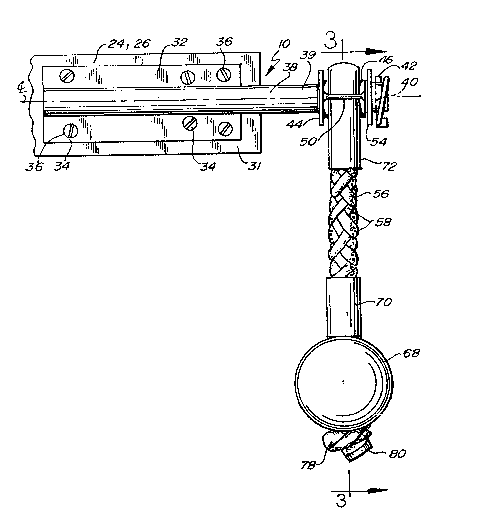Some of the information on this Web page has been provided by external sources. The Government of Canada is not responsible for the accuracy, reliability or currency of the information supplied by external sources. Users wishing to rely upon this information should consult directly with the source of the information. Content provided by external sources is not subject to official languages, privacy and accessibility requirements.
Any discrepancies in the text and image of the Claims and Abstract are due to differing posting times. Text of the Claims and Abstract are posted:
| (12) Patent Application: | (11) CA 2093240 |
|---|---|
| (54) English Title: | BATTING PRACTICE DEVICE |
| (54) French Title: | APPAREIL D'EXERCICE AU BATON |
| Status: | Deemed Abandoned and Beyond the Period of Reinstatement - Pending Response to Notice of Disregarded Communication |
| (51) International Patent Classification (IPC): |
|
|---|---|
| (72) Inventors : |
|
| (73) Owners : |
|
| (71) Applicants : | |
| (74) Agent: | BORDEN LADNER GERVAIS LLP |
| (74) Associate agent: | |
| (45) Issued: | |
| (22) Filed Date: | 1993-04-02 |
| (41) Open to Public Inspection: | 1994-06-11 |
| Availability of licence: | N/A |
| Dedicated to the Public: | N/A |
| (25) Language of filing: | English |
| Patent Cooperation Treaty (PCT): | No |
|---|
| (30) Application Priority Data: | ||||||
|---|---|---|---|---|---|---|
|
ABSTRACT
A batting practice device is attachable to any of various
existing permanent fixtures. The device includes a shock and
energy absorbing elongate mount bar attachable to the fixture
with a portion of the bar extending therebeyond. A metal
mounting plate is affixed to the portion of the mount bar
which extends beyond the fixture. The metal mounting plate
supports a metal pipe affixed thereto suitably by welding.
The pipe also has a portion extending from beyond the plate
in-line with both the plate and the bar. A metal bushing is
rotatably mounted and captured on the pipe portion extending
from the plate. The metal bushing has a loop extending
outwardly thereon. A piece of braided plastic rope with a
hollow core has a first and second end. A ball is provided
with a central aperture therethrough for passing the first end
of the rope therethrough. The first end is further passed
over the bushing, through the loop, into the hollow core the
rope, through the ball aperture after which the first and
second rope ends are tied into a knot that will not pass
through the ball aperture.
Note: Claims are shown in the official language in which they were submitted.
Note: Descriptions are shown in the official language in which they were submitted.

2024-08-01:As part of the Next Generation Patents (NGP) transition, the Canadian Patents Database (CPD) now contains a more detailed Event History, which replicates the Event Log of our new back-office solution.
Please note that "Inactive:" events refers to events no longer in use in our new back-office solution.
For a clearer understanding of the status of the application/patent presented on this page, the site Disclaimer , as well as the definitions for Patent , Event History , Maintenance Fee and Payment History should be consulted.
| Description | Date |
|---|---|
| Time Limit for Reversal Expired | 1999-04-06 |
| Application Not Reinstated by Deadline | 1999-04-06 |
| Deemed Abandoned - Failure to Respond to Maintenance Fee Notice | 1998-04-02 |
| Application Published (Open to Public Inspection) | 1994-06-11 |
| Abandonment Date | Reason | Reinstatement Date |
|---|---|---|
| 1998-04-02 |
The last payment was received on
Note : If the full payment has not been received on or before the date indicated, a further fee may be required which may be one of the following
Please refer to the CIPO Patent Fees web page to see all current fee amounts.
| Fee Type | Anniversary Year | Due Date | Paid Date |
|---|---|---|---|
| MF (application, 2nd anniv.) - small | 02 | 1995-04-03 |
Note: Records showing the ownership history in alphabetical order.
| Current Owners on Record |
|---|
| LONNIE D. MALWITZ |
| Past Owners on Record |
|---|
| None |